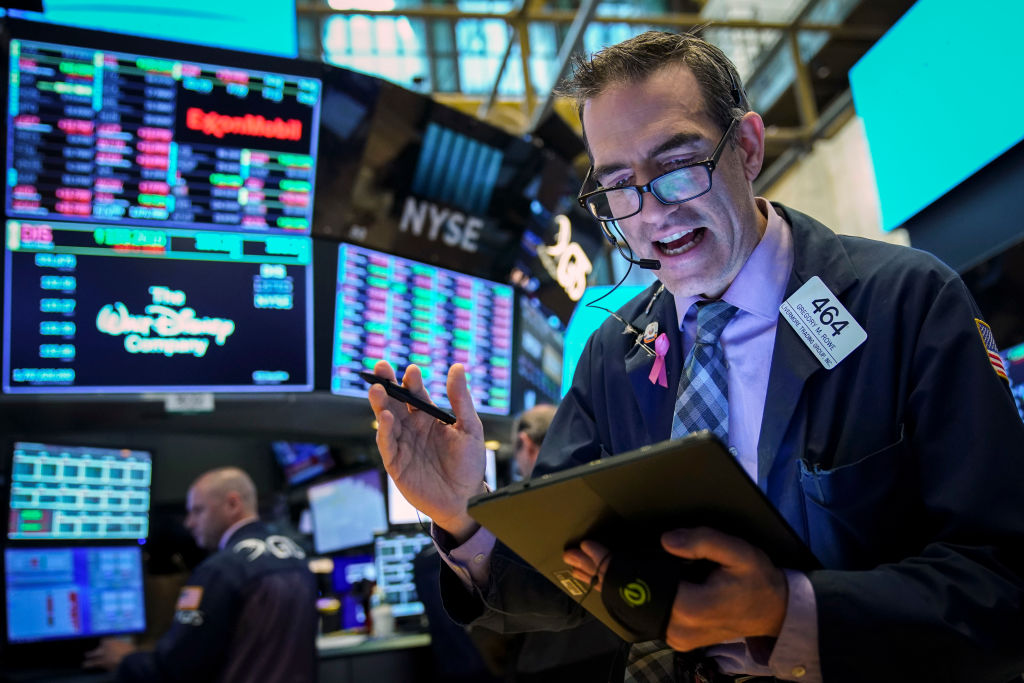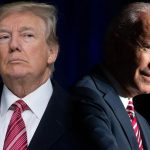Ongoing trade talks between American and Chinese officials took an unexpected turn on Sunday: President Trump took to Twitter and announced a plan to impose tariffs on all Chinese imports by Friday. The tariff threat adds urgency to negotiations that will continue on Wednesday, when a Chinese delegation is due to arrive in Washington, DC.
The move is a departure from last week when US Treasury Secretary Steven Mnuchin and Trade Representative Robert Lighthizer arrived in Beijing to initiate a fresh round of trade talks with China. Despite chronic trade tensions, both sides had sounded optimistic ahead of the meeting. State Councilor Wang Yi, China’s top diplomat, expressed hopes the two sides could ‘reach a mutually beneficial, win-win agreement’. Mnuchin agreed, saying negotiators were ‘in the final laps’ towards a deal. Both sides had believed that the return leg of the talks in Washington this week would yield the trade deal that the president has tentatively described as ‘epic,’ and even ‘the granddaddy of them all’.
The talks are indeed monumental. Their success or failure will shape the next global trade regime. Since the 1990s, the post-war trade order has been sustained by the World Trade Organization, whose irrelevance in talks has not gone unnoticed. The WTO is despised by Trump officials, who have preferred to negotiate small-scale trade deals unbound by WTO dicta, which Trump has described as ‘a disaster for us’. China, whose WTO ascension in 2002 forced major, if incomplete, economic reforms, loathes having to trade on terms it has had no say in setting.
The sidelining of the WTO in trade talks between the world’s only economic superpowers has been a concern for smaller countries. These voting stakeholders use the WTO to settle disputes. ‘Not much life is left in the WTO,’ concedes Taeho Bark, a former minister of trade for South Korea, who stood for the office of director-general of the organization. Bark hopes that a ‘coalition of strong supporters of the multilateral trading system’ will coalesce to defend the WTO, which grants middling powers’ influence on the rules of international commerce. But if the current negotiations are unsuccessful, multilateralism will be dead. The US and China will set their own rules, and without much outside input.
Michael Pillsbury, one of the president’s leading advisers on China, refers to this as the ‘G2’ model of global governance. The two superpowers would work together to forge a new dyadic hegemony. The rest of the world, desperate to access their markets, would fall in line. Pillsbury touts the progress made in previous talks as a sign that the two sides are moving towards a ‘G2 consensus on how US-China relations will work. ‘It’s a nightmare for many countries,’ he admits.
The G2 idea still faces obstacles. The two countries operate their economies in dramatically different ways, and setting common ground rules will be tricky.
China still runs a closed economy. David Dollar, a former US Treasury economic and financial emissary to China, says that ‘rumors are China is willing to open up’, but he also says that ‘China does do things gradually,’ much to the annoyance of their American counterparts. Meanwhile, cooperation will continue to be hobbled by concerns over data security, as currently epitomized by the Huawei 5G controversy. Moreover, China’s state-owned enterprises will be troublesome to regulate. The US wants to restrict their power, because Chinese government support allows these enterprises to write-off losses and create investments that make it difficult for American companies to compete.
Ironically, trade negotiations may strengthen China’s state-owned firms. The Americans want to lessen the US’s trade deficit by having China agree to large purchases of American goods in sectors including energy, semiconductors, and aviation. Such a deal ‘probably will cement the role of state-owned enterprises,’ says Meg Lundsager, former US executive director to the IMF, ‘because they’ll be the ones the government can direct’ to make such purchases.
Even if a deal is reached, it might not last long. The WTO’s admission of China has long been criticized for its failure to hold China accountable to its commitments. ‘China’s going to develop its economy based on its own self-interest,’ says Bradford Ward, a former deputy general counsel for the Office of the US Trade Representative. It will take much effort to get the sort of deal currently being negotiated to stick. And Western observers still talk only about the concessions China needs to make to get a deal. What will the US have to concede to strike a G2 deal?
If G2 fails, the alternative may be what Pillsbury calls a ‘New Cold War’ economy. It is what it sounds like: two antagonistic superpowers, carving out separate international trade domains, with the rest of the world stuck in the middle. An American-led WTO could compete with a parallel China-led order – providing, of course that a new administration opted to stick with the vestigial WTO. Already we see the beginnings of this parallel order in China’s massive Belt-Road Initiative.
This emerging conflict presents the rest of the world with a terrible dilemma. Some members of the Association of Southeast Asian Nations have previously tried to sign on to both China’s Belt-Road Initiative and as well as the US’s abortive Trans-Pacific Partnership. They don’t want to have to choose between China and the United States, but are being made to hedge against future conflict. Should a ‘New Cold War’ heat up, small nations may be compelled to pick sides. It’s a worrying scenario, but some believe it could be navigable.
‘No single system will dominate the global trade environment in the future,’ predicts Taeho Bark of South Korea The hope, he says, is that we are able ‘to maintain the stable global trading system’, by ‘making different approaches complementary’.
It is difficult to imagine how that will happen. Then again, it is also difficult to envision how the ‘G2’ alternative could be made to work either.
‘You’ll know one way or the other in the next couple weeks,’ White House chief-of staff Mick Mulvaney said last Tuesday. One way or the other, the next two weeks will prove critical for the future of world trade.


















